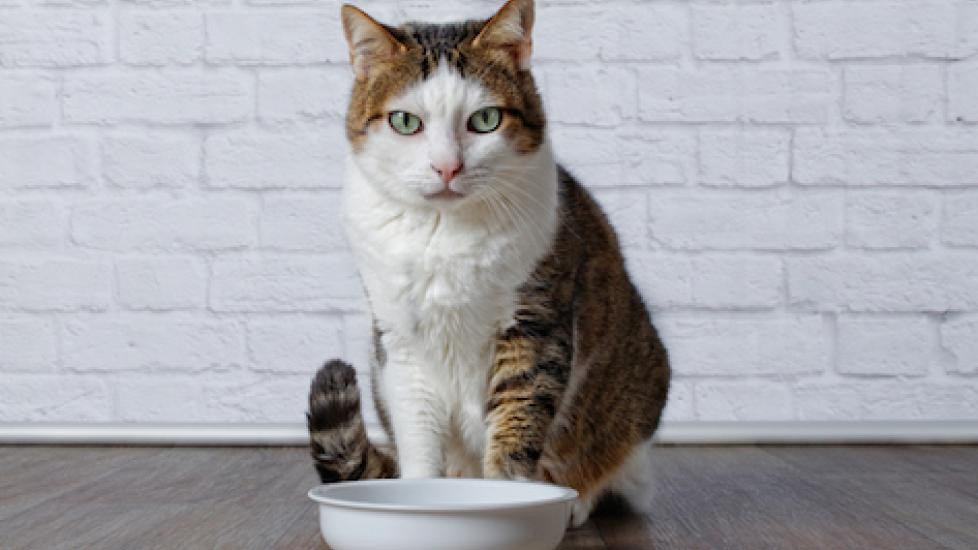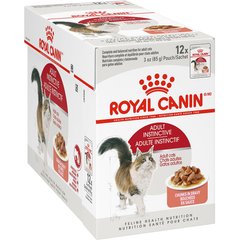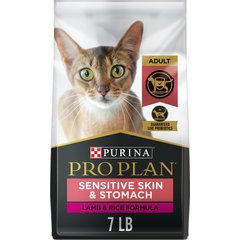How to Ease Your Pet into a Weight Loss Diet
By Paula Fitzsimmons
Given that obesity in cats and dogs is increasing at epidemic rates, there’s a good chance your furry companion is among those pets who need to shed some weight. While you may view calorie counting as a form of punishment, a better way to think about it is as a labor of love.
“While pudgy pets can be cute and the extra weight may seem harmless, we see lots of health problems associated with excess weight that can have a negative impact on quality of life and decrease life expectancy,” says Dr. Wendy Mandese, a clinical assistant professor at the University of Florida College of Veterinary Medicine in Gainesville. “These include Type 2 diabetes (especially in cats), early onset arthritis, high blood pressure, ligament rupture, spinal problems (including paralysis), and heart disease.”
It’s not easy to go from eating table food and super-sized portions to a bland diet, however. What animal—or human, for that matter—enjoys reducing their food intake? Luckily, there are some steps you can take to make the transition a bit easier on your companion—and you.
Any new diet plan should begin with your veterinarian, who will determine appropriate body weight and calorie consumption for your pet and monitor his progress.
Go Slowly
Transitioning to a new diet should be done gradually, says Dr. Joe Bartges, professor of medicine and nutrition at the College of Veterinary Medicine at the University of Georgia in Athens. It can take three to four days but sometimes longer.
“In some studies with diet change, it can take weeks to months. So don't give up,” says Bartges, who is board-certified in veterinary nutrition and internal medicine. “Slowly increase the amount of the new food while decreasing the amount of the old food.” Mandese suggests increasing the amount of new food to old food by 25 percent daily.
It takes time for a weight loss program to work, adds Dr. Donna Raditic, a board-certified veterinary nutritionist with Nutrition and Integrative Medicine Consultants in Athens, Georgia. “I am thrilled with just small amounts of weight loss in my patients, because I know it is not easy and at least we are moving in the right direction.”
Weighing food on a food gram scale can help ease the process. “It allows us to adjust intake by saying OK, let’s decrease intake by 10 or 20 percent fewer grams of food a day,” Raditic says. “It is not only precise but seems less dramatic than going from a half-cup to one-fourth of a cup of dry food, for example.”
Animals should lose no more than 1 to 2 percent of their body weight per week, according to Dr. Zenithson Ng, a clinical assistant professor at the University of Tennessee, College of Veterinary Medicine. “Bring them into the vet’s office to be weighed on the same scale on a regular basis (every two to four weeks, initially),” Ng says.
Vet Recommended Cat Food
- Purina Pro Plan LIVECLEAR Adult Indoor Formula Dry Cat Food, 3.2-lb bag$23.48Chewy Price
- Hill's Science Diet Adult Multiple Benefit Chicken Recipe Dry Cat Food, 15.5-lb bag$63.99Chewy Price
- Royal Canin Feline Health Nutrition Adult Instinctive Chunks in Gravy Cat Food Pouch, 3-oz, case of 12$26.28Chewy Price
- Purina Pro Plan Adult Sensitive Skin & Stomach Lamb & Rice Formula Dry Cat Food, 7-lb bag$28.08Chewy Price
Get Creative with Treats
Treats are a big contributor to pet obesity, says Mandese, who specializes in veterinary primary care and dentistry. “Most people don’t realize that a small handful of commercial treats (even the high-end or ‘natural’ ones) can often equal the calorie count of an additional meal,” she says.
This doesn’t mean all treats are off-limits, however. “I usually recommend frozen veggies such as green beans or matchstick carrots as treats instead of commercial treats, or breaking a treat into several pieces to limit the number given,” Mandese says. “Although occasional apple slices are OK, be careful with fruit as a treat, as it has a lot of sugar.”
Be mindful of foods known to be toxic to animals, like onions, grapes, raisins, and avocados, she warns. “Also, always avoid any artificially sweetened foods. Xylitol, an alternative sweetener for many human low-calorie snacks, is extremely toxic to dogs, even in very small doses.”
Provided your companion likes the kibble you serve him, you can try offering it as a treat, Ng suggests. “Try dividing up the daily allotment by giving a three-fourth cup in the morning and evening, and save half a cup to give throughout the day as treats. That way, you are still giving the maximum amount of calories while still feeling like you are giving snacks.”
Make the Food More Appealing
Compensate for the reduction in calories by making the diet more appealing to him. “Meals can be made more fun by adding 1 to 2 tablespoons of the canned version of the new food to each meal,” suggests Mandese. “It is very important, however, that the canned food be factored into the calorie count for the day (and the kibble decreased in volume to make up for the extra calories).”
Or try adding enhancers to the food. “A little bit of tuna fish water or small amount of chicken broth may entice them to eat. Typically, canned foods may do the trick,” offers Ng, who is board-certified in canine and feline practice.
Raditic suggests an American College of Veterinary Nutrition-formulated, homemade diet as the entire or part of the plan. “I remember we did this for a client using low-fat cottage cheese and vegetables and not only did her beloved Sheltie lose weight, but she did, too,” Raditic recalls. “She started eating more vegetables, etc., while making the diet and lost 25 pounds—that was a win-win for all.”
Also, talk to your veterinarian about prescription weight loss diets. “While diet foods are called diet foods for a reason, often characterized by less fat and less calories, prescription food companies are always making them more palatable and enjoyable,” Ng says.
Let Your Companion Work for Food
Work with your animal’s natural instincts by allowing her to work for her food. Raditic, co-founder of the Companion Animal Nutrition & Wellness Institute, uses automated feeders with her own cats. This allows them to eat small, frequent meals, which she says is how they should ideally be fed. She also thinks it’s a great tool for use in a weight-loss program.
“You weigh out the food and fill up the feeder to deliver the exact gram amount of dry food throughout the day,” she explains “Your dog or cat may start to look at the feeder as the one that delivers food and not you. So begging and following you all over for food is replaced with watching and waiting for that magic feeder to deliver the diet, which could be useful or incorporated into the plan.”
She also uses feeding toys, which let her cats “hunt, stalk, and seek” their food. “It provides some exercise, as well as environmental stimulation that indoor cats need,” Raditic says. “I could see using these for dogs as well—let them roll around a feeding toy to ‘earn’ their daily food and/or treat.”
Speaking of exercise, animals can eat out of boredom and anxiety, just like us, Mandese says. “Increasing your pet’s exercise will not only contribute to his emotional well-being, but will also help with the intended weight loss.”
Getting creative with your pet’s feeding regimen can help ease the transition, making it seem less like punishment, while contributing to her overall health. Weight reduction is not torture, Bartges says. “It is important for the long term health of the pet—otherwise, you may be killing her with kindness.”




